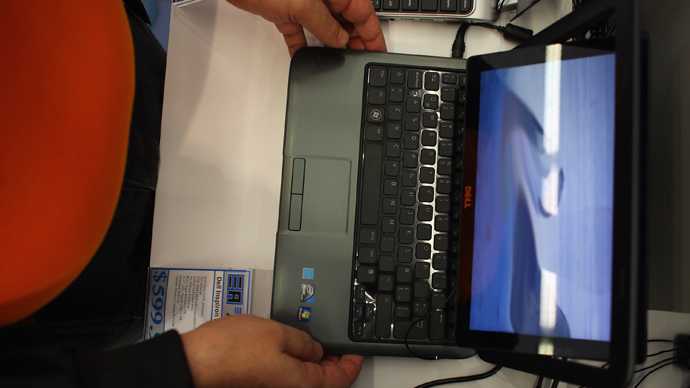The Obama administration quietly announced on Tuesday that it intends to change the way Americans learn about natural disasters and other major emergencies during radio and TV broadcasts, giving the president the ability to flip a switch and address the entire nation at once.
The Emergency Alert System, the latest version of a program first established in 1951, blasts out emergency messages in the event of local weather emergencies, but can also be used to warn Americans about terror attacks and major natural disasters.
Every broadcaster in the country is required to participate in the EAS. Messages travel along a closed, private network, piggybacking from station to station. It can take up to 10 minutes for every radio, TV, cable and satellite provider to blare its alert.
Television screens display text messages during Emergency Alert System events, and could be used by future White Houses for a variety of purposes
+2
Television screens display text messages during Emergency Alert System events, and could be used by future White Houses for a variety of purposes
Most messages in the system are restricted to specific states, counties or other geographic areas. But now the Federal Communications Commission has filed public notice of a rule change that would bypass the daisy-chain entirely and give the federal government instant access to all the nation's airwaves at once, in the event of a national emergency.
Some Republicans fear a system that would give the White House a way to address the entire country at will could be abused.
'Oh, great,' a Republican Capitol Hill staffer told MailOnline on Tuesday. 'Big Brother is talking to you.'
'Call me crazy, but I have a feeling we're going to see the definition of an "emergency" get looser and looser – especially as we get closer to an election.'
More...
Another 'recycled' hard drive: Former Lois Lerner deputy can't be prosecuted for fundraising for Democrats on the job because the FEC destroyed the evidence
Oscar winner Jon Voight launches TV rant against Obama for 'taking the country apart' and 'causing a civil war' over Benghazi, Iraq and immigration
Obama pushing research on cars that talk to cars
Democratic governor who played pool with Obama REFUSES White House request to host illegal immigrant children
The FCC's plan could also make the national EAS vulnerable to the sort of hacking that embarrassed broadcasters in Montana a year ago.
In July 2013 hackers there gained access to an EAS signal and broadcast a phony alert about a zombie apocalypse on a string of CBS television affiliates owned by the Montana Television Network.
'Civil authorities in your area have reported that the bodies of the dead are rising from their graves and attacking the living,' the fictitious message said.
'Follow the messages onscreen that will be updated as information becomes available. Do not attempt to approach or apprehend these bodies as they are considered extremely dangerous.'
At least one radio station in Michigan also fell prey to the hack.
Instant access: Barack Obama and future U.S. presidents will have the ability to flip a switch and address the entire nation at will
Instant access: Barack Obama and future U.S. presidents will have the ability to flip a switch and address the entire nation at will
The congressional aide also said that with more and more Americans going online for information, social media is already replacing broadcast emergency messages as the best way to spread urgent news.
'If we have another 9/11, the people who hear about it through an EAS message are going to be the last to know,' he said. 'By the time you hear that annoying "buzz" sound on the radio, all your friends will have tweeted about it.
But according to a notice published Tuesday in the Federal Register, the government continues to rely on EAS as its primary means of alerting Americans about emergencies in real time.
The Hill reported that the FCC believes the new system will help with 'saving human lives, reducing injuries, mitigating property damage, and minimizing the disruption of the national economy.'
Most messages sent through the EAS are periodic tests designed to condition Americans to what a real alert would look and sound like.
The government has tested the system on a national basis just once, in November 2011.
The FCC also has a separate public alert system for smartphones in the works. It was first tested in 2013 on a statewide basis but hasn't been fully deployed.




Comment